Designing for the Long-Term Health of Trees in our Urban Environment
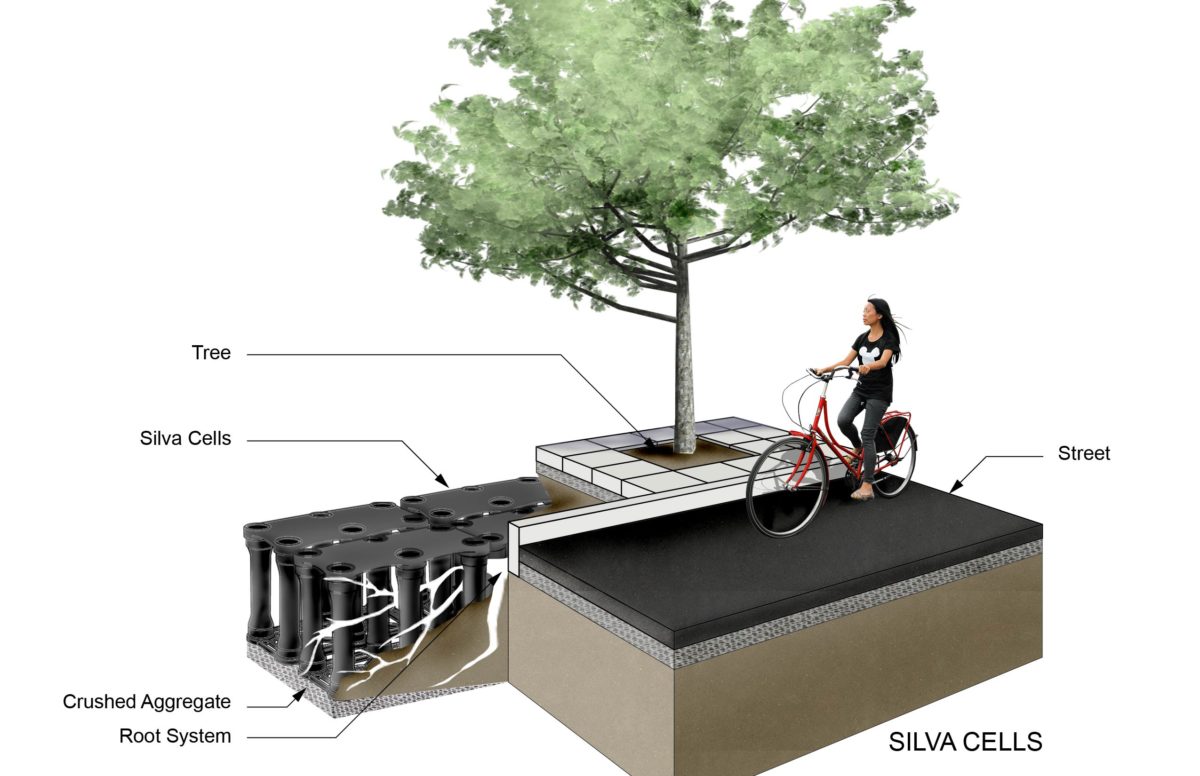
As our communities continue to grow, one of the challenges we face is the loss of tree canopy coverage, which refers to the amount of area covered by tree foliage. The benefits of trees are well-documented – maintaining air quality, high quality of the visual environment, providing wildlife habitat, protecting streams and water bodies, and erosion prevention. However, with increased growth and urbanization a large amount of tree canopy coverage is lost as mature native trees are removed for new development and infrastructure.
Communities are adopting specific goals and strategies to maintain and increase tree canopy coverage, including steps to preserve existing trees, replace trees that are removed, and encourage or require the planting of more trees. As civil engineers and landscape architects, Blueline helps our clients develop site plans that are consistent with these goals. Often the emphasis on tree planting is not accompanied by an equal emphasis on providing measures to encourage strong, long-term growth, resulting in trees that are stunted and in poor health. We not only help clients limit the loss of tree canopy and provide new and replacement trees but also create favorable growing environments conducive to robust growth in the long term since trees take many years to mature.
One of the most important design measures we take to promote strong tree growth is to provide an adequate volume of non-compacted, fertile, organic soil in the tree root zone. So how much soil does a tree need to reach its growth potential? For the last 30 years or so, 1000 cubic feet has been used as a rule of thumb based on research done at Cornell University. The research asserted a need for 2 cubic feet of soil for every square foot of tree crown projection, which works out to roughly 1000 ft3 for a tree with a 25-foot diameter crown. However, the 1,000 cubic feet doesn’t account for differences in water use (which the research addressed) and tree size. Trees in hotter, drier climates need more soil, as do larger tree species. A tree that needs 1000 cubic feet in New York might need 4000 cubic feet in Phoenix.
For street trees in urban environments, there is stiff competition with vehicles, utilities, and other construction limitations for space and dollars, resulting in trees often getting less than the optimum soil volume. For example, street trees are sometimes planted in tree wells as small as 4’x4’ with shallow soil surrounded by pavement over poor, heavily compacted soil, and gravel base. These soil environments lack the pore space to allow roots to access water, air, and nutrients or may have excessive moisture due to poor soil drainage and infiltration that can also deprive the tree of air. Trees in these conditions may meet the immediate need for code compliance in terms of minimum size at installation but in the long term will likely experience poor growth and fail to achieve their mature tree canopy size. In addition, tree roots in search of better soil may buckle pavement or encroach into utility trenches filled with less compact, more porous soils.
Landscape codes are increasingly including minimum soil volumes as either guidelines or requirements. According to DeepRoot Green Infrastructure, urban foresters generally adhere to the following minimum soil volumes based on mature tree size:
Small trees: 300 cubic feet
Medium trees: 600 cubic feet
Large trees: 1,000 cubic feet
The City of Seattle has a guideline of 1200 cubic feet per tree; other local Washington cities have soil volume requirements that vary according to tree size, including Bellevue (500 – 1500 cubic feet) and Tacoma (72 – 180 cubic feet with 3 feet minimum depth).
There are three ways to increase tree soil volume:
- Larger tree planting areas. This can mean wider tree wells in sidewalks, long continuous tree planting strips, and deeper planting soil, as much as 2-3 feet. Root corridors
- Structural soils. These are soils that serve the twin functions of supporting tree growth and providing a suitable base for pavement. They are a mix of more organic, nutrient-rich soil (for the trees) and gravel (for pavement support). By using this soil under pavement, an area that would otherwise be unfavorable for tree growth adds to the total tree soil volume. Some cities have started to encourage or require structural soils in certain situations, such as street trees or around parking lot planting islands. There are different “recipes” but probably the best known is CU Soil, a proprietary blend originating from Cornell University and available locally through authorized vendors.
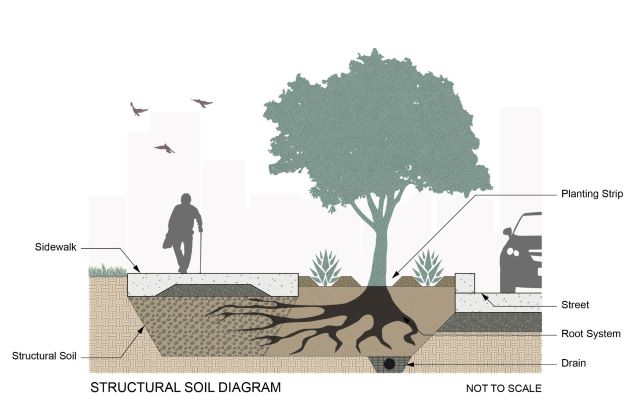
Courtesy of Mary Gangso, Blueline - Suspended pavement systems. These consist of a structure that supports pavement while providing void space that can be filled with high quality soil. DeepRoot defines them this way:
“Suspended pavement is a general term for any technology that supports the weight of paving, thereby creating a void space underneath. The void space is then filled with soil – either the soil that was excavated from that site or a specified mix – and the system is paved over as it would be normally. In this respect, suspended pavements are essentially soil-delivery systems, allowing lightly compacted, high-quality soils to be made available for tree roots in cities and other heavily paved environments. In addition to aiding urban tree growth, the soil is also used for on-site stormwater management, maintaining pre-development hydrology, minimizing non-point source pollution and flooding, and recharging watersheds.”
Research has demonstrated suspended pavement to be one of the most effective methods for growing trees in areas surrounded by pavement. The earliest systems, dating back to the late 1960s, were expensive custom structures, such as concrete slabs resting on grade beams.
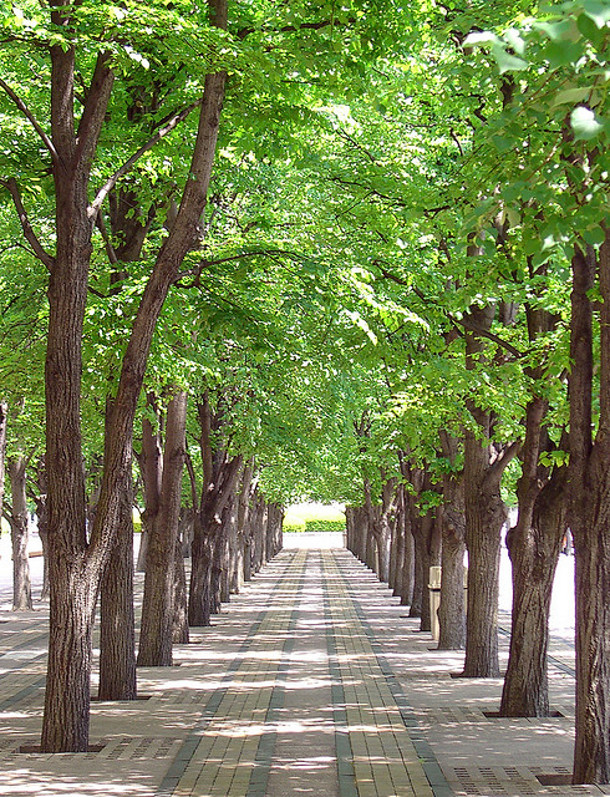
Since then, other “off-the-shelf” modular systems have been developed that are more affordable. One of the most common is generically known as “soil cells”, which are available from various manufacturers. They cost more than other methods of increasing soil volume, but their effectiveness and additional bioretention benefits can be worth the additional cost in some situations.
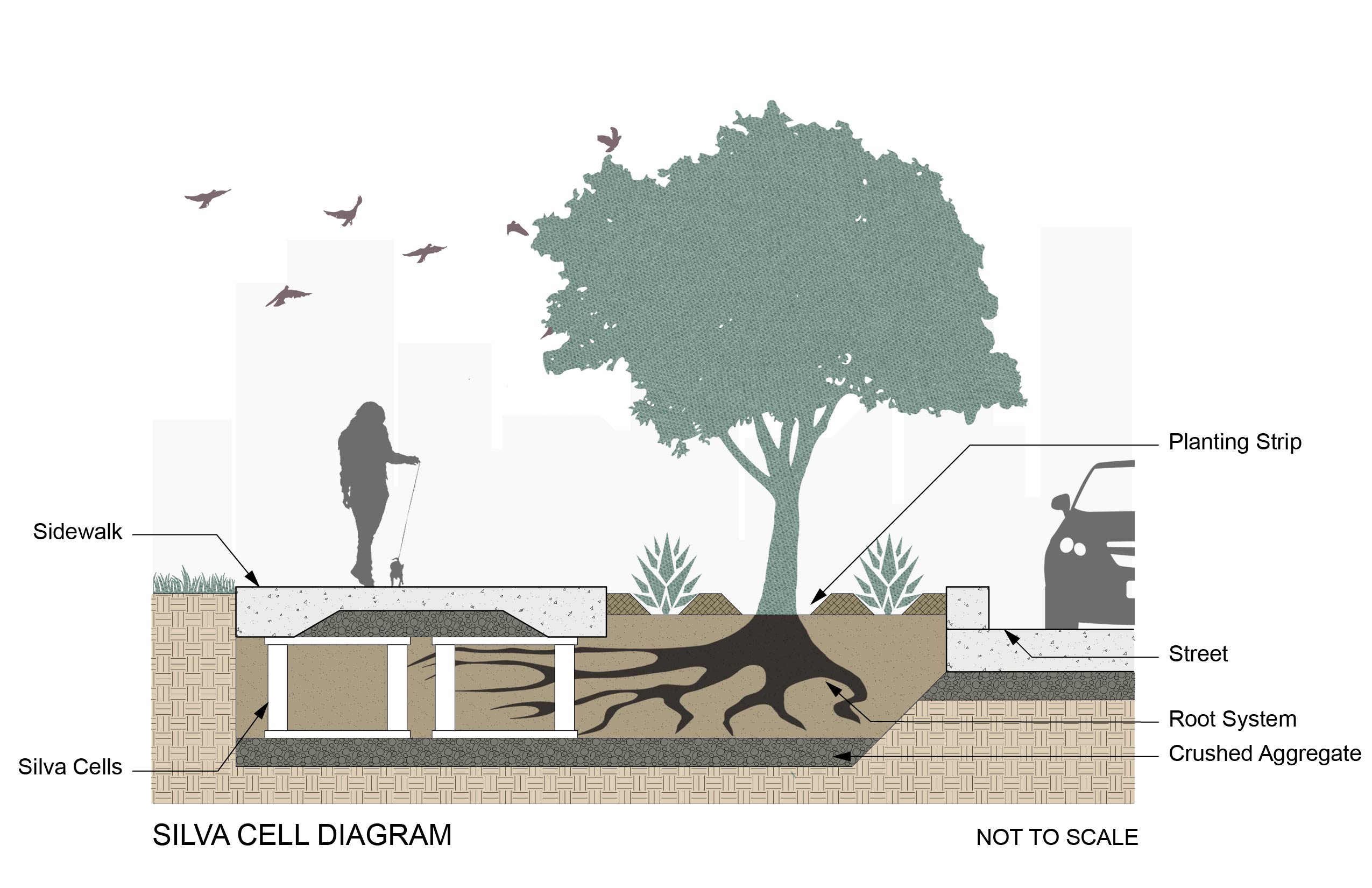
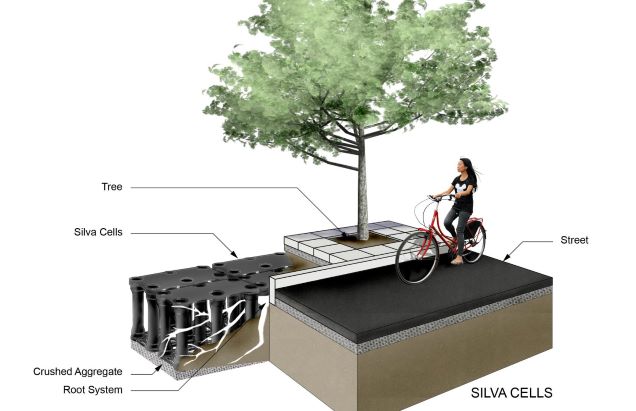
Soil cells have even been suggested to construct root corridors from tree pits to nearby soil volumes, a strategy requiring fewer soil cells and lower cost. A soil cell corridor could be constructed under a sidewalk separating a tree pit from a larger open soil area, such as a park or other open space.
By increasing soil tree volume, we can better mitigate the impacts of urbanization on tree canopy areas and provide the benefit of large, thriving trees that make such a rich contribution to our communities.
If you need assistance meeting local regulations for landscape codes or increasing tree canopy coverage, please contact us.

